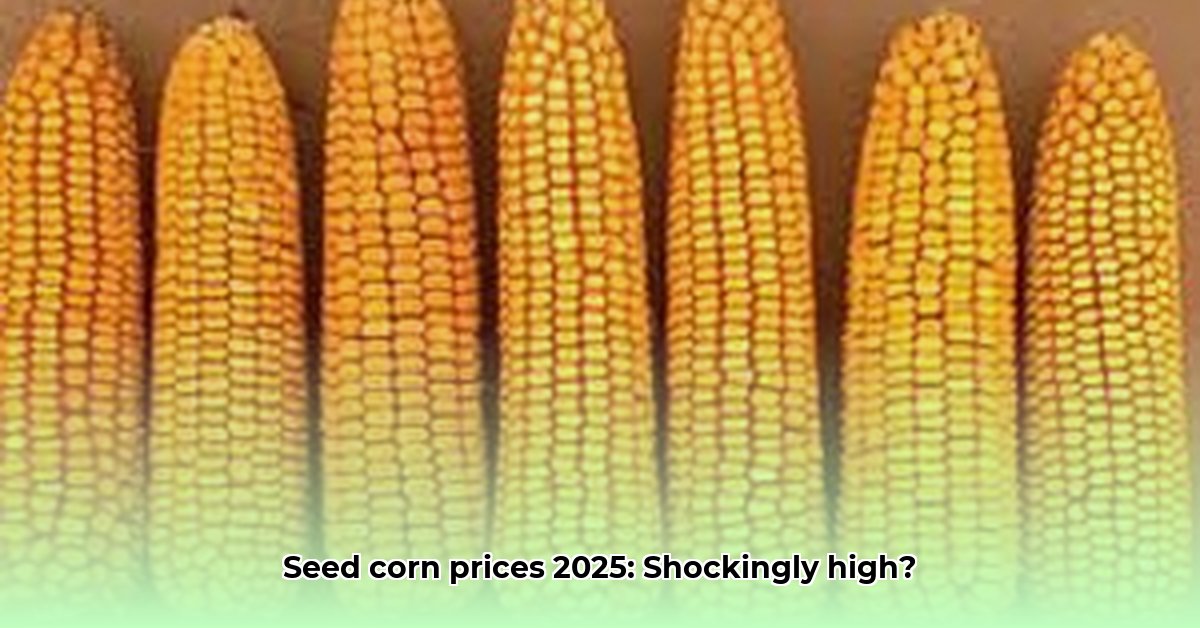
Understanding the Cost of Seed Corn in 2025
Planning your corn planting for 2025? Seed costs are a major factor influencing your profitability. The price of a 50-pound bag of seed corn in 2025 isn't a single number; it varies significantly depending on several interconnected factors. Expect a range from approximately $100 to $300, or even more in some cases. Let's break down the key influences on this price volatility.
Factors Affecting Seed Corn Prices
Several key factors contribute to the fluctuating price of seed corn:
Seed Type: Genetically modified (GMO) corn (corn genetically engineered for pest resistance or other traits) generally commands a higher price than conventional, non-GMO seed due to increased yield potential and reduced input costs over the life cycle of the crop. However, non-GMO seeds might be more appropriate for niche markets or specific farming practices and may represent a cost-effective alternative in those situations. Specific hybrid varieties also impact the cost; hybrids bred for unique traits like drought tolerance or faster maturation will typically cost more.
Geographic Location: Transportation costs and local market dynamics play a significant role. A 50-pound bag in one region might be priced differently in another due to supply, demand, and local competition.
Purchase Volume: Purchasing seed in bulk usually results in lower per-unit costs. Similar to other commodities such as fertilizer or grain purchased in bulk, farmers can often negotiate beneficial discounts.
Market Trends: External factors like climate change and advancements in agricultural technology shape seed prices. The growing demand for drought-resistant seeds, for example, can push prices up; whereas advancements in precision planting can potentially lead to more efficient seed use and reduced costs per bushel.
2025 Market Trends and Their Impact
This year's seed market is shaped by several trends. Climate change is a significant factor, driving demand for climate-resilient hybrids capable of withstanding increasingly unpredictable weather patterns and water scarcity. On the other hand, advances in precision agriculture technologies—like variable-rate planting—are increasing the efficiency of seed usage. This ongoing interplay of supply, demand, and technological advancements creates an unpredictable but ultimately dynamic market.
Sustainable Strategies for Managing Seed Corn Costs
Adopting sustainable practices can significantly reduce seed costs while maximizing yields. How can farmers navigate this complex pricing landscape and maximize their return on investment (ROI)? Following these strategies will help you achieve greater success and profitability.
Thorough Research: Before purchasing, extensively research different seed types and hybrids suitable for your specific soil and climate. Evaluate yields, disease resistance, and other relevant traits to determine the best fit for your operations. Consider the planting density each hybrid can optimally support, balancing higher plant populations per acre with potential competition for resources.
Comparative Shopping: Obtain price quotes from multiple seed suppliers and compare options. Negotiate prices, particularly when purchasing in bulk. Consider exploring different avenues of seed acquisition; perhaps there is a cooperative buying program, or you may be able to secure seed at a lower price by joining a regional farmers' organization.
Early Planning: Purchase seeds well in advance of the planting season to avoid last-minute price spikes and ensure access to your preferred varieties. This forward planning will allow you to avoid the premium paid for seeds procured under pressure prior to the planting season.
Seed Optimization: Utilize best practices such as precision planting technology to reduce seed usage per acre without compromising yield. This highly efficient technology allows precise placement of each seed, optimizing plant spacing and maximizing resource utilization. Explore other soil health strategies (like cover crops or no-till farming) to reduce the need for high-cost, specialized seed varieties adapted for poor soil conditions.
Contractual Agreements: Investigate seed company contracts, some of which offer price discounts or other benefits. Contracts can provide price certainty and potentially reduce financial risk.
Mitigating Risks in Seed Corn Purchasing
Farming inherently involves risk. To effectively manage these risks, consider:
| Risk Factor | Mitigation Strategies |
|---|---|
| Widespread GMO Seed Adoption | Carefully weigh ROI, adhere to regulations, explore insurance options, consider non-GMO alternatives. |
| Impact of Climate Change | Diversify crops, implement water conservation, explore climate-resilient hybrid varieties. |
| Supply Chain Disruptions | Diversify seed suppliers, secure long-term contracts. |
| Price Fluctuations | Utilize futures contracts (if available for seed corn), create a detailed budget, explore financing options. |
How much is a 50 lb bag of seed corn in 2025? The answer is nuanced and depends on a multitude of factors. By conducting thorough research, planning ahead, and implementing smart strategies, you can effectively manage costs, mitigate risks, and increase the probability of a profitable harvest.